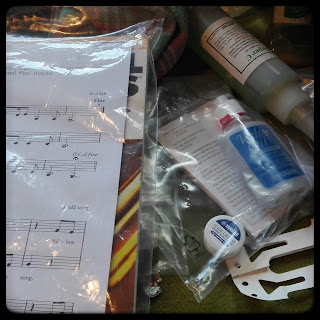Rehearsal
process/procedure:
Advanced
players should be able to warm and tune up their own instruments. Less experienced players will need your
help. If possible, have them come 5 – 10
minutes before the rehearsal time so you can do this.
Rehearsing
a group piece is quite similar to rehearsing a solo piece. Ideally, the students should already be able
to play their own parts.[i] Your role is more like a facilitator; you’re
helping them to help themselves. The
beauty of playing in a small ensemble is that everyone in the group can
contribute ideas and suggestions, so you want to foster that.
I
usually run the piece through, as far as we can, stopping and regrouping as
needed. This gives the students an idea
of the stamina required to play the piece, how their part fits together with
others’, and the overall shape of the piece.
It also gives me an idea of what the students can play well, what they
can’t and how well they know how to play as an ensemble.
For
beginner groups, they will need more direction from you, and more of your time
will be spent on getting them to play as an ensemble: who has the tune, and who
doesn’t? Which part has a minim when the others are playing quavers? Learning
how to start and stop together.
Breathing and phrasing. Making
sure the articulation/bowing matches. Always encourage beginners to mark in any
changes/things to remember with their pencil (or one from your handy
stash). Try not to focus on any one
player (especially if that player is one of your students and the others
aren’t. I know it can feel a bit
embarrassing for you, like it’s a reflection on your teaching, but do try to
avoid it).
Advanced
groups need to work on the same things, but more of your time will be spent on
the ensemble work and the subtle nuances of the music.
Before
the rehearsal, you (in consultation with the group) should decide on what
you’ll be working on. The first movement? The final movement? Intonation? Tricky rhythmical passages? Dynamics? Closer
to the performance you can begin running the piece in its entirety, getting a
feel for stamina and where the weak points are as a whole piece.
It’s a
good idea to record the piece – a recording is impartial and you can prove
dispassionately that the 2nd violin is in fact out of tune in that
phrase, or the bass clarinet is playing the quavers as semiquavers. Recordings also give the students a feel for
the overall feel of the piece.

No comments:
Post a Comment